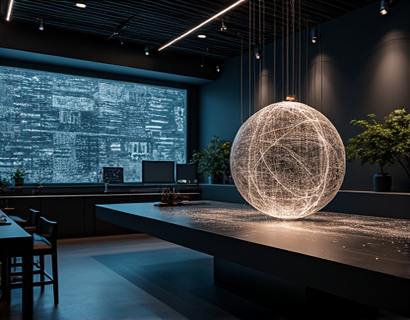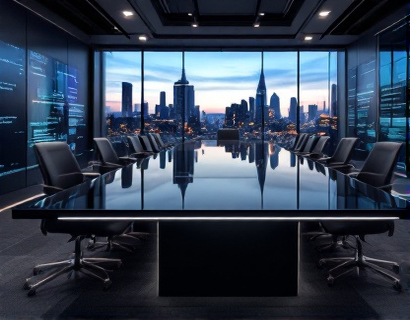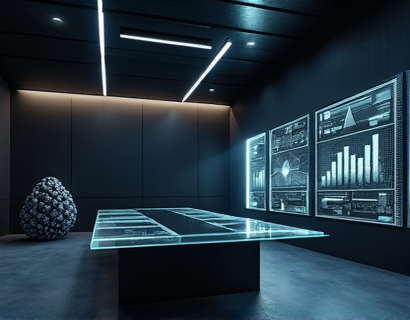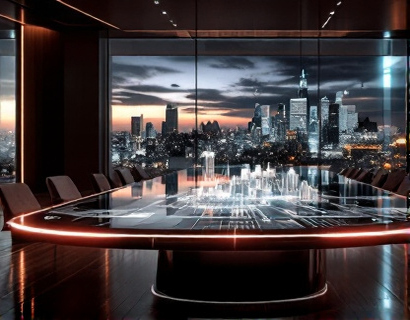Embracing the Future: How Augmented Reality is Revolutionizing E-Commerce and Enhancing Daily Life
In an era where technology seamlessly integrates into every aspect of our lives, augmented reality (AR) has emerged as a transformative force, particularly in the realm of e-commerce. This innovative technology is not just a novelty but a powerful tool that is redefining how we shop, interact with products, and enhance our daily experiences. For tech-savvy consumers eager to embrace lifestyle enhancement products, the convergence of AR and e-commerce presents a unique opportunity to elevate their lives in unprecedented ways.
The integration of AR into online shopping platforms offers an immersive and interactive experience that traditional e-commerce cannot match. By overlaying digital information onto the physical world, AR allows consumers to visualize products in their own environment before making a purchase. This not only enhances the shopping experience but also reduces the likelihood of returns, benefiting both consumers and retailers. For those interested in lifestyle enhancement, this technology opens doors to a world where products are not just bought but experienced.
Understanding Augmented Reality in E-Commerce
Augmented reality in e-commerce is more than just a visual enhancement; it's a comprehensive solution that bridges the gap between the digital and physical worlds. At its core, AR technology uses the camera and display of a device to superimpose virtual objects or information onto the real world. In the context of online shopping, this means that users can see how furniture would look in their living room, try on virtual clothing, or even preview home decor items in their space.
The technology behind AR in e-commerce involves several key components. Computer vision and machine learning algorithms play a crucial role in accurately placing and anchoring virtual objects in the real world. These algorithms ensure that the virtual items appear in the correct scale and perspective, creating a seamless and believable experience. Additionally, spatial mapping technology helps in understanding the physical environment, allowing for more precise and interactive AR experiences.
Benefits of AR-Enhanced Shopping for Consumers
For consumers, the benefits of AR-enhanced shopping are numerous. One of the most significant advantages is the ability to make more informed purchasing decisions. By seeing how a product will look and fit in their own space, consumers can avoid the uncertainty and risk associated with online shopping. This is particularly valuable for high-ticket items such as furniture, where the difference between a good fit and a poor fit can be substantial.
Moreover, AR enhances the overall shopping experience by making it more engaging and fun. Interactive features such as virtual try-ons for accessories or makeup allow users to experiment without the need for physical products. This not only saves time and resources but also adds an element of enjoyment to the shopping process. For tech-savvy consumers who value innovation and convenience, AR provides a shopping experience that is both modern and satisfying.
Transforming Daily Life with AR Products
The impact of AR extends beyond the shopping experience to how products are used and integrated into daily life. Lifestyle enhancement products, when augmented, can offer additional functionalities and insights that improve the user's interaction with the product. For example, smart home devices can be controlled and monitored through AR interfaces, providing a more intuitive and user-friendly experience. Similarly, fitness equipment can display real-time performance metrics and guidance, helping users achieve their fitness goals more effectively.
In the realm of home improvement, AR can transform the way we approach DIY projects. Virtual instruction guides and step-by-step tutorials can overlay onto the physical space, making complex tasks easier to follow. This not only empowers users to tackle projects they might otherwise avoid but also enhances the overall quality of the work done. For those looking to enhance their living spaces, AR provides a powerful tool for creativity and precision.
Case Studies: Successful AR Implementations in E-Commerce
Several companies have successfully integrated AR into their e-commerce platforms, demonstrating the potential of this technology to drive engagement and sales. IKEA, for instance, has developed an AR app called IKEA Place, which allows users to see how furniture would look in their home before purchasing. This app has been widely praised for its accuracy and ease of use, significantly reducing the uncertainty associated with online furniture shopping.
Another notable example is Sephora, which uses AR to offer virtual makeup try-ons. The Beauty Virtual Try-On feature allows customers to see how different products and looks would appear on their face without the need for physical samples. This not only enhances the shopping experience but also aligns with the brand's commitment to sustainability by reducing waste.
These case studies highlight the versatility and effectiveness of AR in various product categories. By providing tangible benefits and enhancing the user experience, these implementations serve as a blueprint for other businesses looking to leverage AR in their e-commerce strategies.
Challenges and Considerations in Implementing AR E-Commerce
While the benefits of AR in e-commerce are clear, there are several challenges and considerations that businesses must address to ensure successful implementation. One of the primary challenges is the technical complexity involved in developing and maintaining AR applications. Ensuring compatibility across different devices and operating systems requires significant investment in technology and expertise.
Another consideration is user adoption. Not all consumers are familiar with AR technology, and some may be hesitant to adopt it. To overcome this, businesses should focus on creating intuitive and user-friendly interfaces that make the AR experience accessible to a wide audience. Providing clear instructions and tutorials can also help ease the learning curve.
Privacy and data security are additional concerns that must be addressed. AR applications often require access to the user's camera and environment, which raises questions about data privacy. Companies must be transparent about how user data is collected, used, and protected to build trust and ensure compliance with regulations.
The Future of AR in E-Commerce
As technology continues to advance, the potential for AR in e-commerce is vast. Future developments may include more sophisticated AR experiences, such as haptic feedback to simulate touch and texture, and deeper integration with other emerging technologies like 5G and the Internet of Things (IoT). These advancements will further enhance the immersive and interactive nature of AR, making it an even more integral part of the shopping experience.
For businesses, the key to success in the AR-driven e-commerce landscape will be innovation and customer-centricity. By continuously exploring new ways to integrate AR and by focusing on delivering exceptional customer experiences, companies can stay ahead of the curve and meet the evolving needs of tech-savvy consumers. The future of e-commerce is not just about selling products but about creating memorable and transformative experiences that enhance everyday life.
In conclusion, augmented reality is not just a trend but a fundamental shift in how we interact with products and services online. For those interested in lifestyle enhancement, AR offers a powerful tool to discover, experience, and integrate innovative products into their daily lives. As the technology matures and becomes more accessible, the possibilities for enhancing our lives through AR will only continue to grow.










































